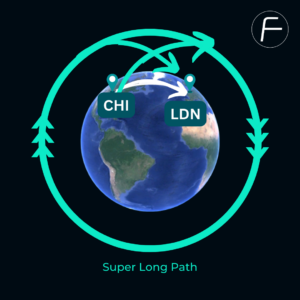How Sensitivity pushes our KPIs forward
Don’t be too sensitive, unless you can drop the extra signal
Raft reached greater signal detection sensitivity levels demonstrating how incredible HF propagation could be. Just wait and see.
For a refresher on how HF-based links work, jump here. If you’re already up to speed (obviously pun intended), you know that High-Frequency radio is mirrored back and forth to earth by ionosphere layers or carried at times in a tunnel between layers.
This way, HF signals could travel very long distances between only two antennas.
Quite a remarkable phenomenon.
The receive side antenna, gear, and algos should be sensitive to detect a signal sent from the transmit side – thousands of kilometers away. The sensitivity should be enough to find a true signal that made a long way and fainted dramatically, so the signal-to-noise ratio is low.
The more sensitive the system is, the more signals it can correctly detect.
What happens when the sensitivity increases?
Well, firstly the service KPIs improve. We provide a better throughput (percent of received signals), longer service availability, and fewer errors.
But some signals that are detected should be ignored.
The long path
For some time now, we know that it may happen and a signal will go, in addition to forwards – crossing the short distance between sites, also backward – taking the “long path” from transmit to receive sites. Orbiting the earth from the other side.

How long can the long path be?
Well, an HF signal transmitted from Chicago to London would travel almost 6,500 kilometers over the short path and over 33,000 kilometers over the long path.
We know it can happen because we’re so sensitive, Raft systems occasionally detect “long path” signals.
To avoid an error, detecting the long-path-traveling signal as original, our system would ignore the second identical signal detected EXACTLY after the difference in expected latencies between the long and short paths – if CHI-FRK short path is 29ms let’s say {contact us to get our latency numbers} the long path over HF will be about 145ms in latency. So if a signal is detected after 29ms and we see it again after EXACTLY 145-29=116ms… It may very well be the case of a signal going backward too and making it to the receive site somehow. So, we have to drop it.
Amazing ah? Well, it goes even further than that.
The super-long path
As we develop our system to be even more sensitive, increasing our signal detection capabilities and pushing KPIs higher, we started noticing that sometimes, a signal arrives after traveling the “super long path”.
This means that the signal made it to the receiving site once, traveling 6,500 kilometers in our CHI-LDN example. Then some part of the radio wave energy was able to circumvent the globe for another 40,000 kilometers without losing track, just to be detected again by our ultra-sensitive system.
So yeah, those are rare occasions, but we are ready for them too, and such a brave or lucky signal is dropped. Sorry. Can’t have double detection.

And what can be next? We will continue improving our system and, of course, will wait patiently for the “ultra-super-long path” 😉 we promise to share, the microsecond we see one coming.
The RAFT team.